| |
|
Xiamen Oil Paintings, Wholesale Direct!
|
|
100% hand painted, 100% cotton canvas, 100% money back if not satisfaction. |
|
|
|
|
ART WORKS INDEX
A
B
C
D
E
F
G
H
I
J
K
L
M
N
O
P
Q
R
S
T
U
V
W
X
Y
Z
|
|
ARTISTS INDEX
A
B
C
D
E
F
G
H
I
J
K
L
M
N
O
P
Q
R
S
T
U
V
W
X
Y
Z
|
|
|
|
|
|
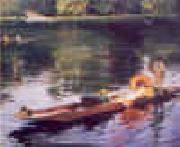 |
John Lavery
|
|
1856-1941
Sir John Lavery (20 March 1856 ?C 10 January 1941) was an Irish painter best known for his portraits.
Belfast-born John Lavery attended the Haldane Academy in Glasgow, Scotland, in the 1870s and the Acad??mie Julian in Paris in the early 1880s. He returned to Glasgow and was associated with the "Glasgow School". In 1888 he was commissioned to paint the state visit of Queen Victoria to the Glasgow International Exhibition. This launched his career as a society painter and he moved to London soon after. In London he became friendly with James McNeill Whistler and was clearly influenced by him.
Like William Orpen, Lavery was appointed an official artist in the First World War. Ill-health, however, prevented him from travelling to the Western Front. A serious car crash during a Zeppelin bombing raid also kept him from fulfilling this role as war artist. He remained in Britain and mostly painted boats, planes and airships. During the war years he was a close friend of the Asquith family and spent time with them at their Sutton Courtenay Thames-side residence, painting their portraits and idyllic pictures like Summer on the River (Hugh Lane Gallery).
After the war he was knighted and in 1921 he was elected to the Royal Academy. During this time, he and his wife both became interested in their Irish heritage and were tangentially involved in both the Irish War of Independence and the Irish Civil War: they gave the use of their London home to the Irish negotiators during the Treaty negotiations. After Michael Collins was killed, Lavery painted Michael Collins, Love of Ireland, now in the Hugh Lane Municipal Gallery.
In 1929 John Lavery made substantial donations of his work to both The Ulster Museum and the Hugh Lane Municipal Gallery and in the 1930s he returned to Ireland. He received honorary degrees from the University of Dublin and Queen's University of Belfast. He was also made a free man of both Dublin and Belfast.
He died in County Kilkenny, aged 84, from natural causes. He was buried in Putney Vale Cemetery.
|
|
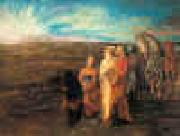 |
John La Farge
|
|
1835-1910
John La Farge (March 31, 1835 ?C November 14, 1910) was an American painter, stained glass window maker, decorator, and writer.
Born in New York City, New York, his interest in art was aroused during his training at Mount St. Mary's University and St. John's College (now Fordham University). He had only the study of law in view until he returned from his first visit to Paris, France where he studied with Thomas Couture and enjoyed the most brilliant literary society of the day. Even his earliest drawings and landscapes, done in Newport, Rhode Island, after his marriage in 1861 to Margaret Mason Perry, sister-in-law of Lilla Cabot Perry, show marked originality, especially in the handling of color values, and also the influence of Japanese art, in the study of which he was a pioneer.
La Farge's inquiring mind led him to experiment with color problems, especially in the medium of stained glass. He succeeded not only in rivaling the gorgeousness of the medieval windows, but in adding new resources by his invention of opalescent glass and his original methods of superimposing and welding his material. Among his many masterpieces are the "Battle Window" at Harvard and the cloisonn?? "Peacock Window" in the Worcester Art Museum. Two of his largest windows are located in Unity Church in North Easton, Massachusetts. The earliest of these, the "Angel of Help" was completed in 1887 while the "Figure of Wisdom" dates to 1901. Both of these windows were restored by "Victor Rothman for Stained Glass Inc" of Yonkers, New York in the 1990's.
Between 1859 and 1870, he illustrated Tennyson's Enoch Arden and Robert Browning's Men and Women. Breadth of observation and structural conception, and a vivid imagination and sense of color are shown by his mural decorations. His first work in mural painting was done in Trinity Church, Boston, in 1873. Then followed his decorations in the Church of the Ascension (the large altarpiece) and St. Paul's Church, New York. For the State Capitol at St. Paul he executed, in his seventy-first year, four great lunettes representing the history of religion, and for the Supreme Court building at Baltimore, a similar series with Justice as the theme. In addition there are his vast numbers of other paintings and water colors, notably those recording his extensive travels in the Orient and South Pacific.
His labors in almost every field of art won for him from the French Government the Cross of the Legion of Honor and membership in the principal artistic societies of America, as well as the presidency of the Society of Mural Painters. Enjoying an extraordinary knowledge of languages (ancient and modern), literature, and art, by his cultured personality and reflective conversation he greatly influenced all who knew him. Though naturally a questioner he venerated the traditions of religious art, and preserved always his Catholic faith and reverence.
In 1904, he was one of the first seven chosen for membership in the American Academy of Arts and Letters. On his passing in 1910, John LaFarge was interred in the Green-Wood Cemetery in Brooklyn, New York. During his life, he maintained a studio at 51 West 10th Street, in Greenwich Village, which today is part of the site of Eugene Lang College
|
|
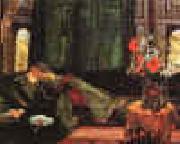 |
John Frederick Lewis
|
|
1805-1876
British
John Frederick Lewis Gallery
John Frederick Lewis (July 14, 1805 ?C August 15, 1876) was an Orientalist English painter. He specialized in Oriental and Mediterranean scenes and often worked in exquisitely detailed watercolour. He was the son of Frederick Christian Lewis (1779-1856), engraver and landscape-painter.
Lewis lived in Spain between 1832 and 1834. He lived in Cairo between 1841 and 1850, where he made numerous sketches that he turned into paintings even after his return to England in 1851. He lived in Walton-on-Thames until his death.
Lewis became an Associate of the Royal Academy (ARA) in 1859 and a member (an RA) in 1865.
After being largely forgotten for decades, he became extremely fashionable, and expensive, from the 1970s and good works now fetch prices into the millions of dollars or pounds at auction.
|
|
|
|
|
|
|
|
 |
Johannes Lingelbach
|
|
(Frankfurt, 1622 - Amsterdam - 1674), was a Dutch Golden Age painter, associated with the second generation of Bambocciate, a group of genre painters working in Rome from 1625 - 1700.
|
|
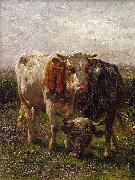 |
Johannes Hubertus Leonardus de Haas
|
|
(25 March 1832 - 4 August 1908) was a Dutch animal and landscape painter, and a peripheral figure of the Hague School.
Born at Hedel, De Haas spend his youth in Amsterdam where he got his first art education at evening-classes at the Koninklijke Academie. Consequently he moved to Haarlem where he was apprenticed to the artist Pieter Frederik van Os. During his stay in Haarlem he befriended Paul Gabriël and Hendrik Dirk Kruseman Van Elten who were also studying with Van Os.
In 1853, together with his two friends, De Haas decided to go to Oosterbeek. Here they came into contact with the influential landscape painter Johannes Warnardus Bilders and the group of painters which had gathered around him, many of whom would later be part of the Hague School. De Haas also met his future wife in Oosterbeek, Bilders' daughter, Caroline. In 1855 he received good reviews for his pictures that were exhibited in Paris from the noted art critic Jean Baptiste Gustave Planche.
In 1857 De Haas first went to Brussels, where he became friends with Willem Roelofs. De Haas frequently returned to the Netherlands and Oosterbeek for inspiration and Caroline. From 1860 his friend Gabriël also lived in Brussels, and De Haas often painted cattle in the landscapes of both Roelofs and Gabriel, fitting in perfectly with both their styles. In 1860 he won the gold medal at the exhibition of Utrecht.
From 1861 until 1869 De Haas is permanently settled in Brussels, painting mainly on the coasts of Flanders and Picardie in northern France. He married Caroline Bilders in 1862, and in 1864 they are briefly joined by her brother, the promising painter Gerard Bilders. In 1865 Caroline dies at the age of 24 of tuberculosis, leaving him with a young son. During his stay in Brussels De Haas is instrumental in passing on the style of the Barbizon school to the painters at Oosterbeek.
|
|
|
|
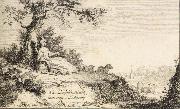 |
Johann Ludwig Aberli
|
|
Swiss, 1723-1786, Swiss painter, draughtsman and engraver. In 1741 he moved to Berne, where he took drawing lessons with Johann Grimm (1675-1747), whose school of drawing he took over in 1747. He visited the Bernese Oberland with Emanuel Handmann, Christian Georg Schetz (1718-91) and Friedrich Wilhelm Hirt (1721-72) in 1759 and in the same year travelled to Paris with Adrian Zingg (1734-86). This was his only trip abroad, but it determined him to work exclusively as a landscape painter. After nine months he returned to Berne, where his landscape views became popular, particularly with foreign travellers, enamoured of 'Nature' and keen to retain souvenirs of their travels. He was one of the first artists to portray the beauties of the Swiss countryside; his favourite subjects were the Aare Valley and views of Swiss lakes (e.g. View of Erlach on the Lake of Biel; Berne, Kstmus.). He invented a technique known as the 'Aberli style', which consisted of watercolour washes added to an image in which slightly smudged outlines were achieved through a combination of engraving and etching. The prints were made from drawings taken from nature and finished in the studio. His style was characterized by delicate execution, an intimate narrative approach, refined colours and the ability to convey a light and vaporous atmosphere. Aberli's success was such that he had to employ assistants and pupils to aid him in the coloration process; his pupils included Erasmus Ritter, Johann Jakob Biedermann, Marquard Wocher (1760-1830), Gabriel Ludwig Lory the elder (1763-1840) and Peter Birmann. From 1773 to 1775 Aberli also painted a series of costumes in response to tourist demand.
|
|
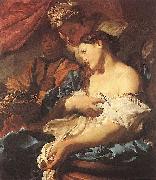 |
Johann Liss
|
|
Also called Jan Lys, (c. 1590 or 1597 - 1627 or 1631) was a leading German Baroque painter of the 17th century, active mainly in Venice.
Liss was born in Oldenburg (Holstein) in Schleswig-Holstein, Germany. After an initial education in his home state, he continued his studies, according to Houbraken, with Hendrick Goltzius in Haarlem and Amsterdam. Around 1620 he travelled through Paris to Venice. He moved to Rome around 1620?C1622, and his first works there were influenced by the style of Caravaggio.
Although his earlier work was concerned with the contrasts of light and shadow, his final move to Venice in the early 1620s modified his style and gave impetus to brilliant color and a spirited treatment of the painted surface.In 1627, he was created an admired large altarpiece, the Inspiration of Saint Jerome in San Nicole da Tolentino. His loose brushstrokes seem precursor to rococo styles of Guardi brothers.This final style, along with that of other "foreign" painters residing in Venice, Domenico Fetti and Bernardo Strozzi, represent the first inroads of Baroque style into the republic.
Liss fled to Verona to escape the Plague spreading in Venice, but succumbed there prematurely in 1629. According to Houbraken, he worked day and night on his paintings, so that Joachim von Sandrart felt that his health was at risk and urged him to join him in Rome
|
|
|
|
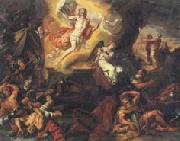 |
Johann Carl Loth
|
|
German Baroque Era Painter, 1632-1698
was a German painter, born in Munich but active most of his life in Venice. He is also called Johann Karl, Carlotto, and Carlo Lotti. He was the son and pupil of Johann Ulrich Loth (1590- 1662). He was commissioned to paint for the emperor Leopold in Vienna. He was influenced by Pietro Liberi. His brother Franz Loth was also a painter in Venice and Germany. He had numerous pupils including Willem Drost, Cornelis de Bruijn, Johann Michael Rottmayr, Paul Strudel, Santo Prunati, Daniel Seiter, and Giovan Battista Langetti.
|
|
|
|
 |
Johan Laurentz Jensen
|
|
(8 March 1800, Gentofte - 26 March 1856, Copenhagen) was a Danish artist who specialized in flower painting.
In parallel with his studies at the Danish Academy, he became a pupil of Christoffer Wilhelm Eckersberg and also of Cladius Detlev Fritzsch. Specializing in flower painting, Jensen continued his education in Paris under the Flemish flower painting brothers, Gerard and Cornelis van Spaendonck, and at the porcelain factory in Sevres where he learnt the art of miniature flower painting. Taking 17th-century Dutch flower painting as a starting point, he revived the art in Denmark. His floral arrangements often had both a decorative and symbolic value. Danish plants were often accompanied by exotic flowers and fruits, sometimes even birds. He also became head artist at the Danish Procelain Factory. Jensen had an extensive circle of customers and many students, especially women, including Louise of Hesse-Kassel who later married King Christian IX. Since the 1980s, his works have gained wide international recognition. Many are exhibited in Statens Museum for Kunst and in Thorvaldsens Museum.
|
|
|
|
 |
Jeles-Eugene Lenepveu
|
|
French Neoclassical Painter, 1819-1898.
Studied under François-Edward Picot.
|
|
|
|
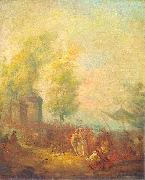 |
Jean-Pierre Norblin de La Gourdaine
|
|
(in Polish, Jan Piotr Norblin; 15 July 1745 - 23 February 1830) was a French-born painter, draughtsman, engraver, drawing artist and caricaturist. From 1774 to 1804 he resided in the Polish-Lithuanian Commonwealth, where he obtained citizenship.
He is considered one of the most important painters of the Polish Enlightenment. He achieved great success in Poland. Given many commissions from some of the most notable families of the Polish-Lithuanian Commonwealth, he stayed there for many years, not returning to Paris until the early 19th century. His style showed the influence of Antoine Watteau, and combined the Rococo tradition of charming fates galantes and fetes champetres with a panorama of daily life and current political events, captured with journalistic accuracy. He created a gallery of portraits of representatives of all social classes in the last years of the Polish-Lithuanian Commonwealth.
|
|
 |
Jean-Paul Laurens
|
|
1838-1921
French
Jean Paul Laurens Gallery
was a French painter and sculptor, and one of the last major exponents of the French Academic style.
Born in Fourquevaux, he was a pupil of L??on Cogniet and Alexandre Bida. Strongly anti-clerical and republican, his work was often on historical and religious themes, through which he sought to convey a message of opposition to monarchical and clerical oppression. His erudition and technical mastery were much admired in his time, but in later years his hyper-realistic technique, coupled to a highly theatrical mise-en-sc??ne, came to be regarded as overly didactic and even involuntarily comical.
Laurens was commissioned to paint numerous public works by the French Third Republic, including the steel vault of the Paris city hall, the monumental series on the life of Saint Genevieve in the apse of the Panth??on, the decorated ceiling of the Od??on Theater, and the hall of distinguished citizens at the Toulouse capitol. He also provided illustrations for Augustin Thierry's R??cits des temps m??rovingiens ("Accounts of Merovingian Times").
Laurens was a professor at the École nationale sup??rieure des Beaux-Arts in Paris, where he taught Andr?? Dunoyer de Segonzac and George Barbier. Two of his sons, Paul Albert Laurens (1870-1934) and Jean-Pierre Laurens (1875-1932), became painters and teachers at the Acad??mie Julian. He died in Paris in 1921.
|
|
|
|
|
|
 |
Jean-Louis Hamon
|
|
Plouha 1821 - Saint - Raphael, 1874.
French Academic Painter, 1821-1874.
Studied under Charles Gleyre.
French Academic Painter, 1821-1874. Studied under Charles Gleyre. French painter and designer. He was encouraged to practise drawing by the Brothers of the Christian Doctrine at Lannion. Through the intervention of Felicite-Robert de Lamennais (1782-1854), he was made drawing-master at a religious seminary at Ploermel, Brittany, although at this stage he had received no instruction and had never seen an oil painting. In 1840 he asked his conseil general for help and left for Paris the following year with a grant of 500 francs. He went to Delaroche's studio, where he made friends with Picou, Jean-Leon Gereme, Jean Aubert (1824-1906) and Jean Eugene Damery (1823-53). Charles Gleyre, who took over Delaroche's studio in 1843, encouraged and protected him during years of poverty.
|
|
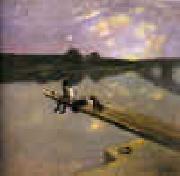 |
Jean-Louis Forain
|
|
1852-1931
French painter, printmaker and illustrator. Around 1860 he moved with his family to Paris, where he was taught by Jacquesson de la Chevreuse (1839-1903), Jean Baptiste Carpeaux and Andre Gill. He participated in the Franco-Prussian War (1870-71) and was a friend of the poets Paul Verlaine and Arthur Rimbaud; the latter is the presumed subject of a portrait (1874; priv. col., see 1982 exh. cat., no. 1) that may have influenced Manet late portrait of Mallarme (1876; Paris, Louvre). Forain first met Manet through his friendship with Degas in the early 1870s at the salon of Nina de Callias. He continued to associate with Manet, meeting the group of young Impressionists at the Cafe Guerbois and the Cafe de la Nouvelle Athenes. In 1878 Forain painted a small gouache, Cafe Scene (New York, Brooklyn Mus.), which probably influenced Manet Bar at the Folies-Bergere (1881-2; London, Courtauld Inst. Gals).
|
|
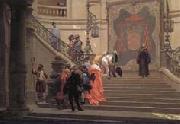 |
Jean-Leon Gerome
|
|
French Academic Painter and Sculptor, 1824-1904
was a French painter and sculptor in the style now known as Academicism. The range of his oeuvre included historical painting, Greek mythology, Orientalism, portraits and other subjects, bringing the Academic painting tradition to an artistic climax. Born at Vesoul (Haute-Saône), he went to Paris in 1840 where he studied under Paul Delaroche, whom he accompanied to Italy (1843-1844). He visited Florence, Rome, the Vatican and Pompeii, but he was more attracted to the world of nature. Taken by a fever, he was forced to return to Paris in 1844. On his return he followed, like many other students of Delaroche, into the atelier of Charles Gleyre and studied there for a brief time. He then attended the Ecole des Beaux-Arts. In 1846 he tried to enter the prestigious Prix de Rome, but failed in the final stage because his figure drawing was inadequate. He tried to improve his skills by painting The Cockfight (1846), an academic exercise depicting a nude young man and a lightly draped girl with two fighting cocks and in the background the Bay of Naples. He sent this painting to the Salon of 1847, where it gained him a third-class medal. This work was seen as the epitome of the Neo-Grec movement that had formed out of Gleyre's studio (such as Henri-Pierre Picou (1824-1895) and Jean-Louis Hamon), and was championed by the influential French critic Theophile Gautier. G??rôme abandoned his dream of winning the Prix de Rome and took advantage of his sudden success. His paintings The Virgin, the Infant Jesus and St John (private collection) and Anacreon, Bacchus and Cupid (Mus??e des Augustins, Toulouse, France) took a second-class medal in 1848. In 1849 he produced the paintings Michelangelo (also called In his studio) (now in private collection) image of the painting and A portrait of a Lady (Mus??e Ingres, Montauban). In 1851 he decorated a vase, later offered by Emperor Napoleon III of France to Prince Albert, now part of the Royal Collection at St. James's Palace, London. He exhibited Bacchus and Love, Drunk, a Greek Interior and Souvenir d'Italie, in 1851; Paestum (1852); and An Idyll (1853). In 1852 G??rôme received a commission by Alfred Emilien Comte de Nieuwerkerke, Surintendant des Beaux-Arts to the court of Napoleon III, for the painting of a large historical canvas, the Age of Augustus image of the painting. In this canvas he combines the birth of Christ with conquered nations paying homage to Augustus. Thanks to a considerable down payment, he was able to travel in 1853 to Constantinople, together with the actor Edmond Got. This would be the first of several travels to the East : in 1854 he made another journey to Turkey and the shores of the Danube, where he was present at a concert of Russian conscripts, making music under the threat of a lash. In 1854 he completed another important commission of decorating the Chapel of St. Jerome in the church of St. S??verin in Paris. His Last communion of St. Jerome in this chapel reflects the influence of the school of Ingres on his religious works. To the exhibition of 1855 he contributed a Pifferaro, a Shepherd, A Russian Concert, The Age of Augustus and Birth of Christ.
|
|
|
|
 |
Jean-Etienne Liotard
|
|
1702-1789
Swiss
Jean Etienne Liotard Gallery
He began his studies under Professor Gardelle and Petitot, whose enamels and miniatures he copied with considerable skill. He went to Paris in 1725, studying under J. B. Masse and François Lemoyne, on whose recommendation he was taken to Naples by the Marquis Puysieux. In 1735 he was in Rome, painting the portraits of Pope Clement XII and several cardinals. Three years later he accompanied Lord Duncannon to Constantinople. His eccentric adoption of oriental costume secured him the nickname of the Turkish painter. He went to Vienna in 1742 to paint the portraits of the imperial family. Still under distinguished patronage he returned to Paris. In 1744 he visited England, where he painted the princess of Wales in 1753, and went to Holland in 1756, where, in the following year, he married Marie Fargues. She also came from a Hugenot family, and wanted him to shave off his beard. Another visit to England followed in 1772, and in the next two years his name figures among the Royal Academy exhibitors. He returned to his native town in 1776. In 1781 Liotard published his Trait?? des principes et des r??gles de la peinture. In his last days he painted still lifes and landscapes. He died at Geneva in 1789.
Liotard was an artist of great versatility, and though his fame depends largely on his graceful and delicate pastel drawings, of which La Liseuse, The Chocolate Girl, and La Belle Lyonnaise at the Dresden Gallery are delightful examples, he achieved distinction by his enamels, copperplate engravings and glass painting. He also wrote a Treatise on the Art of Painting, and was an expert collector of paintings by the old masters. Many of the masterpieces he had acquired were sold by him at high prices on his second visit to England. The museums of Amsterdam, Berne, and Geneva are particularly rich in examples of his paintings and pastel drawings. A picture of a Turk seated is at the Victoria and Albert Museum, while the British Museum owns two of his drawings. The Louvre has, besides twenty-two drawings, a portrait of Lieutenant General Hrault and a portrait of the artist is to be found at the Sala di pittori, in the Uffizi Gallery, Florence. While his son also married a Dutch girl, the Rijksmuseum inherited an important collection of his drawings and paintings.
|
|
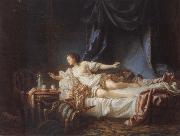 |
Jean-Baptiste Le Prince
|
|
French Painter, 1734-1781,French painter, draughtsman and printmaker. Born to a family of ornamental sculptors and gilders, he became famous for creating a new kind of genre picture, based on the direct observation of Russian subjects, and also for perfecting aquatint technique. Sometime around 1750 he became a pupil of Fran?ois Boucher, thanks to the protection of the Mar?chal de Belle-Isle (1684-1761), governor of Metz. Boucher's saturated brushwork, highly finished surfaces and incisive drawing had a decisive impact upon the young artist, as did, perhaps, the diversity of his output. He was also inspired by 17th-century Dutch and Flemish genre and landscape painters.
|
|
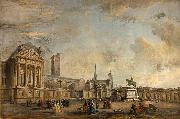 |
Jean-Baptiste Lallemand
|
|
(1716-1803) was a French artist born in Dijon. He was mainly a painter and draftsman of landscapes and genre works. He sometimes signed himself Lallemant or Allemanus.After a stay in Italy, he went to Paris and became a member of the Academie de Saint-Luc. He died in Paris.
The Musee des Beaux-Arts de Dijon owns many of his works, including a drawing and a painting showing the Château de Montmusard. His works also feature in the collections of the Musee Carnavalet and the Cabinet des estampes of the Bibliotheque nationale, both in Paris.
|
|
|
|
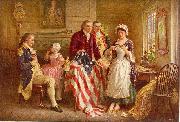 |
Jean Leon Gerome Ferris
|
|
(August 18, 1863 - March 18, 1930) was an American painter best known for his series of 78 scenes from American history, entitled The Pageant of a Nation, the largest series of American historical paintings by a single artist.
He was born in Philadelphia, Pennsylvania, the son of Stephen James Ferris, a portrait painter and a devotee of Jean-L??on G??rôme (after whom he was named) and Mariano Fortuny.He grew up around art, having been trained by his father and having two acclaimed painters, Edward Moran and Thomas Moran, as uncles.
Ferris enrolled in the Pennsylvania Academy of the Fine Arts in 1879 and trained further at the Acad??mie Julian beginning in 1883 under William-Adolphe Bouguereau.He also met his namesake G??rôme, who greatly influenced Ferris's decision to paint scenes from American history. As Ferris wrote in his unpublished autobiography, "[G??rôme's] axiom was that one would paint best that with which he is most familiar".
However, initially his subjects were Orientalist in nature, that movement having been in vogue when he was young. Some of his material was original, some of it took after Fortuny, but he was skilled enough, despite never having had any experience with Asia. In 1882, he exhibited a painting entitled Feeding the Ibis, which was valued at $600.
By 1895, Ferris had gained a reputation as a historical painter, and he embarked on his dream of creating a series of paintings that told a historical narrative. In 1898 he sold one of these, General Howe's Levee, 1777, but he later regretted it, realizing that such a series could not be complete if the separate paintings could not be kept together. As such, he never sold another one of those, but he did sell the reproduction rights to various publishing companies. This later would have the effect of greatly popularizing his work, as these companies made prints, postcards, calendars and blank-backed trade cards use in advertisements. Laminated cards of these works were still being sold as late as 1984.
The Landing of William PennThe paintings showed idealized portrayals of famous moments from American history, but were often historically inaccurate. The Landing of William Penn, for example, shows Penn being greeted at New Castle by American Indians who are clothed in the tradition of tribes from the Great Plains. In The First Thanksgiving 1621, the black outfits the Pilgrims are shown wearing are wrong, and the Wampanoag did not wear feathered war bonnets, nor would they have been sitting on the ground.
The complete series was shown at Independence Hall in Philadelphia from 1913 to 1930, then moved next door to Congress Hall. In later years it was shown in a number of locations, including the Smithsonian Institution, before being returned to the Ferris family.
|
|
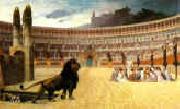 |
Jean Leon Gerome
|
|
French
1824-1904
Jean Leon Gerome Galleries
French painter, sculptor, and teacher. Son of a goldsmith, he studied in Paris and painted melodramatic and often erotic historical and mythological compositions, excelling as a draftsman in the linear style of Jean-Auguste-Dominique Ingres. His best-known works are scenes inspired by several visits to Egypt. In his later years he produced mostly sculpture. He exerted much influence as a teacher at the Ecole des Beaux-Arts; his pupils included Odilon Redon and Thomas Eakins. A staunch defender of the academic tradition, he tried in 1893 to block the government acceptance of the Impressionist works bequeathed by Gustave Caillebotte.
|
|
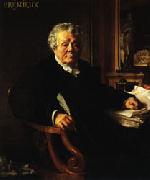 |
Jean Lecomte Du Nouy
|
|
French Painter and Sculptor, 1842-1923,was an orientalist French painter and sculptor. He was Charles Gleyre's and Jean-Leon G??rome's pupil. A Paris street was named after him in 1932.
|
|
|
|
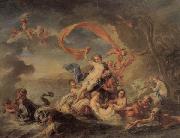 |
Jean Baptiste van Loo
|
|
Flemish Painter, 1684-1745
was a French subject and portrait painter. He was born in Aix-en-Provence, and was instructed in art by his father Louis-Abraham van Loo, son of Jacob van Loo. Having at an early age executed several pictures for the decoration of the church and public buildings at Aix, he was employed on similar work at Toulon, which he was obliged to leave during the siege of 1707. He was patronized by the prince of Carignan, who sent him to Rome, where he studied under Benedetto Luti. Here he was much employed on church pictures, and in particular executed a greatly praised Scourging of Christ for St Maria in Monticelli. At Turin he painted Charles Emmanuel II, Duke of Savoy and several members of his court. Then, moving to Paris, where he was elected a member of the Acad??mie Royale de Peinture et de Sculpture, he executed various altar-pieces and restored the works of Francesco Primaticcio at Fontainebleau. In 1737 he went to England, where he attracted attention by his portrait of Colley Cibber and of Owen McSwiny, the theatrical manager; the latter, like many other of van Loo's works, was engraved in mezzotint by John Faber Junior. He also painted Sir Robert Walpole, whose portrait by van Loo in his robes as chancellor of the exchequer is in the National Portrait Gallery, London, and the prince and princess of Wales. He did not, however, practise long in England, for his health failing he retired to Paris in 1742, and afterwards to Aix, where he died on 19 December 1745.
|
|
|
|
 |
Jan lievens
|
|
Dutch Baroque Era Painter, 1607-1674
Dutch painter, draughtsman and printmaker. His work has often suffered by comparison with that of Rembrandt, with whom he was closely associated from 1625 to 1631. Yet Lievens's early work is equal to that of Rembrandt, although in later years he turned more towards a somewhat facile rendering of the international Baroque style favoured by his noble patrons, thus never fully realizing his early promise.
|
|
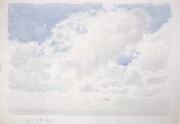 |
James Walter Robert Linton
|
|
water-colourist ,English. 1869-1947
Australian silversmith, jeweller, woodworker and painter of English birth. His father was the watercolourist Sir James Dromgole Linton (1840-1916). Having trained as a painter and architect in London, he travelled to Western Australia in 1896 and began practising metalwork after settling in Perth; he was appointed head of the art department of Perth Technical School in 1902. Following a trip to London in 1907, when he attended classes at the Sir John Cass Technical Institute under Harold Stabler, he concentrated on producing metalwork. Working in partnership with Arthur Cross, William Andrews and his own son Jamie Linton (1904-80), he produced ecclesiastical and domestic wares, presentation pieces and jewellery. His designs were influenced by British Arts and Crafts metalwork and were bold and simple, with decoration generally confined to hammered surfaces, twisted wire, hardstones and enamels.
|
|
|
|
|
|
 |
James Latham
|
|
James Latham (c. 1696 - 26 January 1747) was an Irish portrait painter.
James Latham was born in Thurles, County Tipperary, Ireland and possibly related to the family of Lathams of Meldrum and Ballysheehan. After some practice of his art, Latham studied for an academic year in Antwerp (1724 - 25) where he became a Master of the Guild of St Luke. He returned to Dublin by 1725, and may have visited England in the 1740s, as the influence of Joseph Highmore, as well as Charles Jervas and William Hogarth, is evident in his work of this period. Anthony Pasquin memorably dubbed Latham "Ireland's Van Dyck". Latham died in Dublin on 26 January 1747.
Several of James Latham's portraits are in the National Gallery of Ireland collection in Dublin; one is of the famous MP Charles Tottenham (1694-1758) of New Ross, Co. Wexford, "Tottenham in his Boots" (Cat. No.411) and a second is a portrait of Bishop Robert Clayton (1697-1758) and his wife Katherine.
|
|
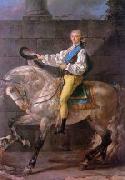 |
Jacques-Louis David
|
|
Jacques-Louis David, France Neoclassicism painter, b.1748 - d.1835. Jacques-Louis David is famous for his huge, dramatic canvasses of Napoleon and other historical figures, including Oath of the Horatii (1784), Death of Marat (1793) and The Sabine Women (1799). Early in his career he was a leader in the neoclassical movement; later his subjects became more modern and political. David was himself active in the French Revolution as a supporter of Robespierre and is sometimes called the chief propagandist for the Revolution; after the Reign of Terror ended he was briefly imprisoned for his actions. When Napoleon took power David became his court painter and created several grand canvasses of the Emperor, including the heroic Napoleon Bonaparte Crossing the Alps (1801) and the enormous Coronation of Napoleon and Josephine (1807).
|
|
 |
Jacques-Louis David
|
|
French
b.Aug. 30, 1748, Paris
d.Dec. 29, 1825, Brussels
Jacques-Louis David is famous for his huge, dramatic canvasses of Napoleon and other historical figures, including Oath of the Horatii (1784), Death of Marat (1793) and The Sabine Women (1799). Early in his career he was a leader in the neoclassical movement; later his subjects became more modern and political. David was himself active in the French Revolution as a supporter of Robespierre and is sometimes called the chief propagandist for the Revolution; after the Reign of Terror ended he was briefly imprisoned for his actions. When Napoleon took power David became his court painter and created several grand canvasses of the Emperor, including the heroic Napoleon Bonaparte Crossing the Alps (1801) and the enormous Coronation of Napoleon and Josephine (1807). David also painted Napoleon in His Study (1812), with its famous image of Napoleon with one hand tucked inside his vest. After Napoleon ouster David went in exile to Brussels, where he remained until his 1825 death
|
|
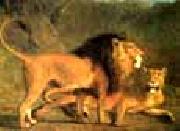 |
Jacques-Laurent Agasse
|
|
1767-1849
Swiss
Jacques-Laurent Agasse Galleries
(b Geneva, 24 March 1767; d London, 27 Dec 1849). English painter of Swiss birth. Born into a wealthy and politically influential Huguenot family, Agasse spent his early childhood at the country estate of Cravin, where he may have developed the interest in animals and natural history that was to guide his later career as an artist in England. Agasse trained first at the Ecole du Colibri in Geneva and subsequently in Paris under Jacques-Louis David (beginning in 1787) and possibly under Horace Vernet. His early artistic output consisted chiefly of unpretentious silhouette cut-outs in the style of Jean-Daniel Huber. At this time he also undertook a serious study of dissection and veterinary science.
|
|
 |
Jacques Linard
|
|
(1597-1645) was a French painter of the first half of the 17th century. He painted still-lives. He was baptised on the 6th of September, 1597. His first records of being of artist was in the 1620's. He was married in 1626 to the daughter of a Parisian Master Painter. In 1631 he is quoted as a painter
|
|
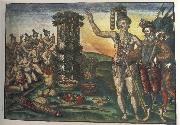 |
Jacques Le Moyne de Morgues
|
|
French painter, illustrator and explorer.
c.1533 -1588
French painter, illustrator and explorer, also active in Florida and London. In April 1564 he sailed with Ren? de Laudonni?re as artist of the Huguenot expedition to Florida. In September 1565 the Spaniards overran the colony, but he escaped and returned to France. By c. 1580 he had settled in Blackfriars, London, 'for religion' and received letters of denization on 12 May 1581. He later came into contact with Sir Walter Ralegh and his colonizing circle and with John White, the artist of the first English colony of Virginia, with whom he exchanged ideas and perhaps collaborated. Ralegh commissioned him to illustrate the Florida enterprise, and Le Moyne produced an account Brevis narratio eorum quae in Florida
|
|
|
|
|
|
 |
Jacopo Ligozzi
|
|
(1547 - 1627) was an Italian painter, illustrator, designer, and miniaturist of the late Renaissance and early Mannerist styles.
Born in Verona, he was the son of the artist Giovanni Ermano Ligozzi, and part of a large family of painters and artisans. After a time in the Habsburg court in Vienna where he displayed drawings of animal and botanical specimens, he was invited to come to Florence, receiving the patronage of the Medici as one of the court artists. Upon the death of Giorgio Vasari in 1574, he became head of the Accademia e Compagnia delle Arti del Disegno, the officially patronized guild of artists, which was often called to advise on diverse projects. He served Francesco I, Ferdinando I, Cosimo II and Ferdinando II, Grand Dukes of Tuscany. He worked on some projects with Bernardino Poccetti. Late in life, he was named director of the grand-ducal Galleria dei Lavori, a workshop providing designs for artworks made mainly for export: embroidered textiles and for the newly popular medium of pietre dure, mosaics of semiprecious stones and colored marbles.
Jacopo Ligozzi was born at Verona c. 1543, He died after 1632. He painted some frescoes for the cloister of the Ognissanti. He painted for Santa Maria Novella a canvas of St. Raymond resuscitating a Child and a Martyrdom of St. Dorothea for the church of the Conventuali at Pescia. Both Agostino Carracci and Andrea Andreani engraved some of his works
|
|
|
|
|
|
|
|
|
| Wholesale China Oil Painting Wholesale Oil Painting China Xiamen Portrait Reproduction on canvas Chinese Oil Painting Wholesale USA Oil Painting |
|
|
|
|
|